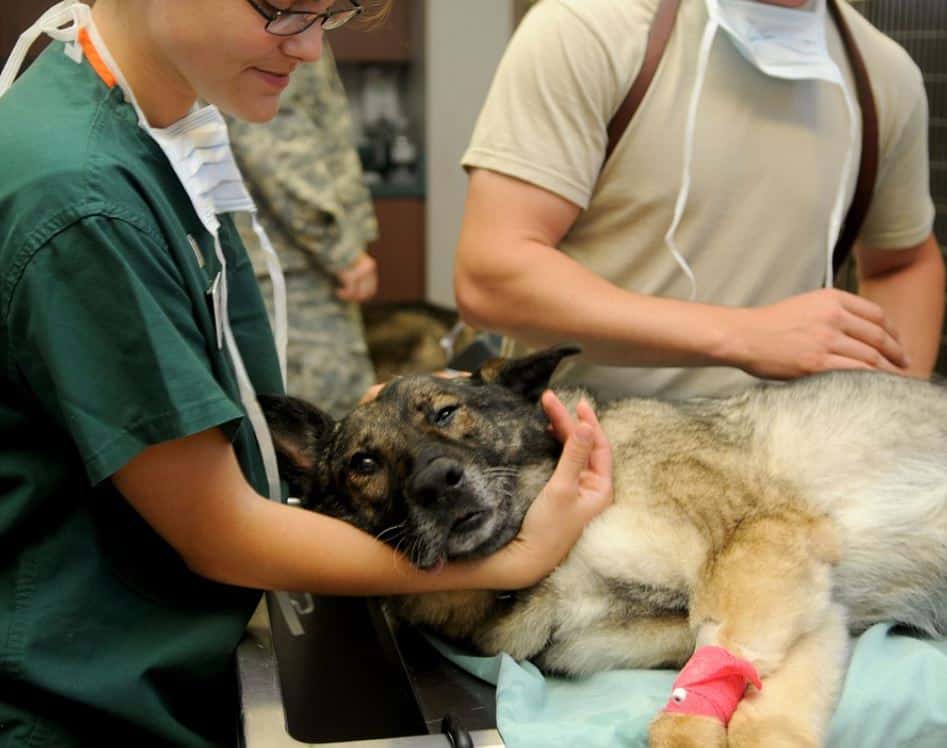Dog Cancer Treatment Gets Green Light from FDA

WASHINGTON – Dog-owners whose pets are diagnosed with a common form of cancer now have a federally approved treatment option.
That new treatment, the first fully approved drug for canine lymphoma, has shown the conditional track of animal medicine can fulfill its mission to greenlight treatments for rare animal diseases, according to the U.S. Food and Drug Administration.
The FDA gave the first full approval last week to a treatment for lymphoma in dogs. The treatment, Tanovea (rabacfosadine injection), is the first new animal drug available under conditional approval to become fully approved, according to materials from the agency.
The company associated with the newly approved drug, VetDC, Inc., has claimed that Tanovea has “demonstrated a 77% overall response and a 45% complete response rate, supporting a reasonable expectation of efficacy in both naïve and relapsed/refractory lymphoma.”
Another company, Elanco Animal Health, will be the exclusive distributor of TANOVEA-CA1, after a development and commercialization agreement with VetDC.
Tanovea had already received “conditional approval” under an FDA program for animal treatments in 2016.
Conditional approval is a designation that lets drug companies sell pet medicine that hasn’t yet been proven to meet the FDA’s full requirements for diseases, which is allowed under 2004 Congressional legislation. That 2004 legislation, the Minor Use and Minor Species Animal Health Act, was meant to make medicine available to pets that don’t have a lot of options, according to the FDA.
It had tried to accomplish this by increasing the amount of legally approved medicine for minor species, such as ferrets and fish, and for minor uses in major species, like treating cancer in dogs, the FDA has said. In both cases, it wanted to make drugs that there wasn’t much of a financial incentive to pursue, easier to bring to market. It was expanded in 2018 to include more drugs in the conditional pathway, which the agency has said is a “main provision” of the law.
The legislation was also created to eliminate the “financial roadblocks” pharmaceutical companies face in trying to bring “limited-demand animal drugs” to the market, the FDA said.
Globally, the animal medicines market has grown consistently since 2015 and has been projected to keep growing as well, with especially pronounced growth in the U.S.
Lymphoma is considered a disease of the immune system that grows in “lymphocytes,” a kind of white blood cell, the FDA said. It can affect any organ in the body, but it is most common in organs attached to the function of the immune system, according to written materials from the agency. The symptoms of the disease for dogs vary, and its causes are not presently known.
According to the American Kennel Club, lymphoma is a common cancer in dogs and is similar to the disease in humans. The same chemotherapy protocols can be used in both humans and dogs. A spokesperson for the FDA has said that lymphoma represents as much as 24% of all cancer in dogs.
While a significant and relatively common form of canine cancer, it still only affects about 70,000 dogs a year, according to materials from the FDA. For context, the American Veterinary Medical Association estimates that there are more than 48 million households in the U.S. that own dogs, almost 40% of the population, making up a total of just shy of 77 million pet dogs in the country.
The FDA touts the approval as a vindication of its conditional pathway.
“This gives veterinarians another important tool to help extend the quality of life for dogs with lymphoma, and potentially give them and their owners more time together,” said Steven M. Solomon, director of the FDA’s Center for Veterinary Medicine.
The FDA has indicated that it hopes to use the pathway more in the near future.
“We’re committed to continue using all our authorities to help make limited-demand treatment options available to our animal companions,” Acting FDA Commissioner Janet Woodcock said.























